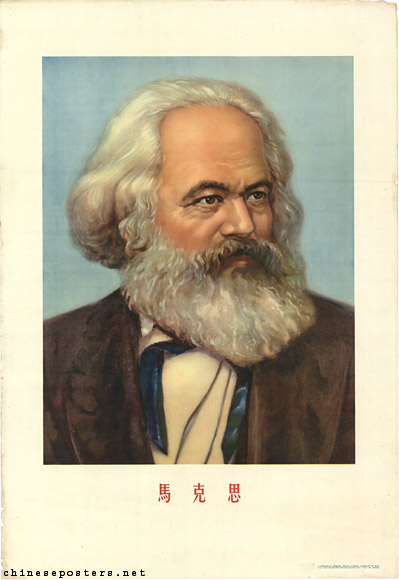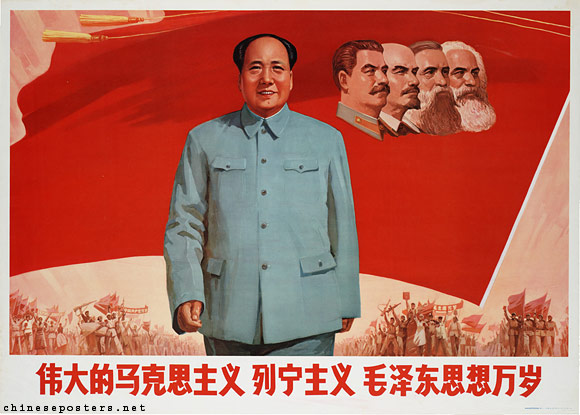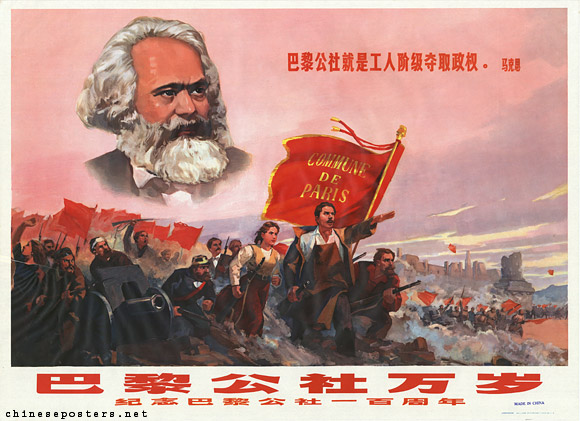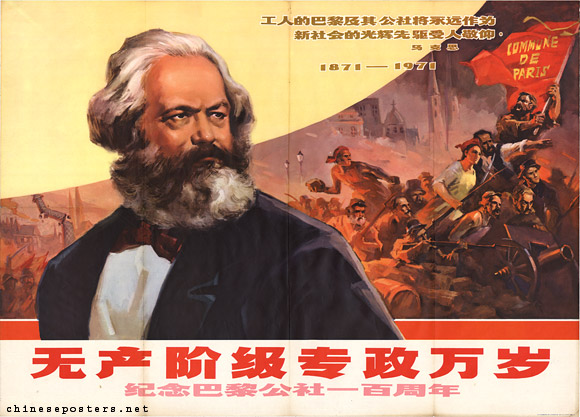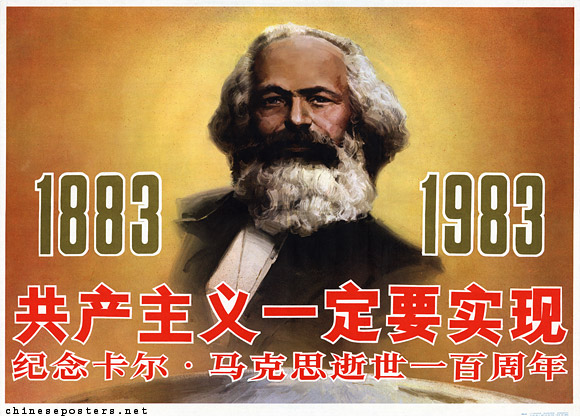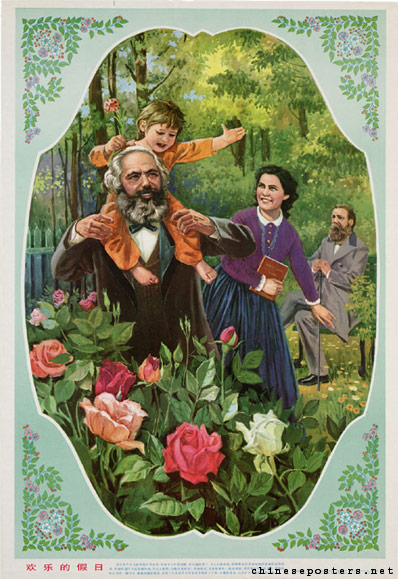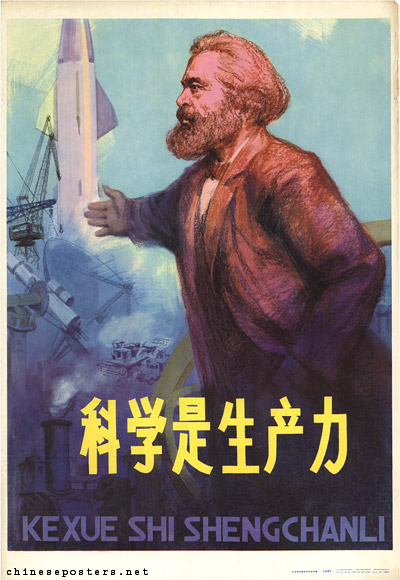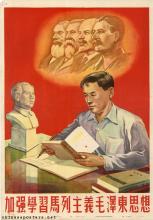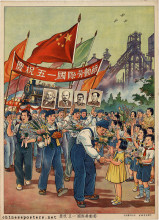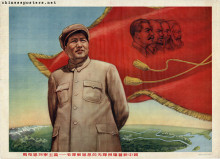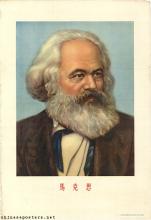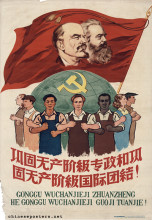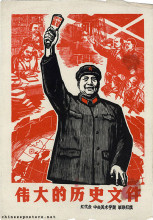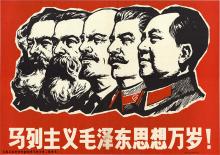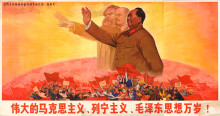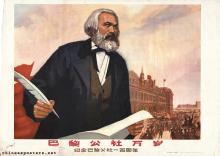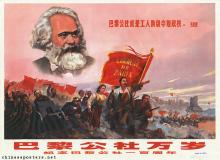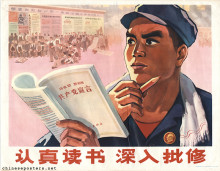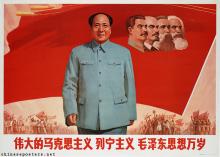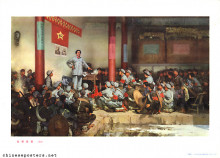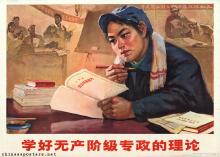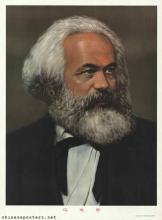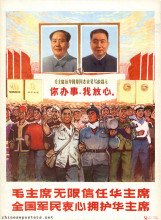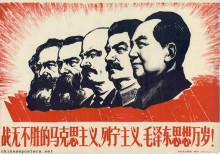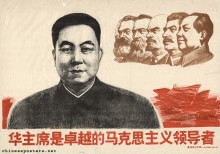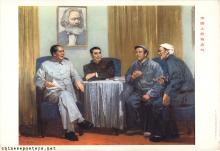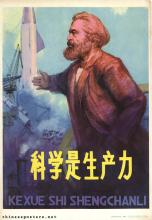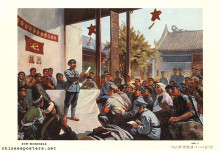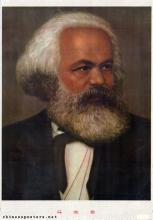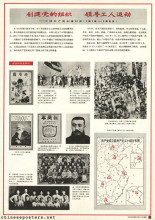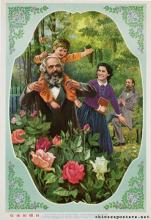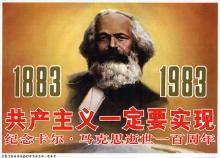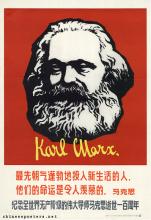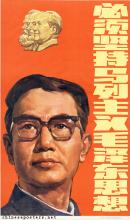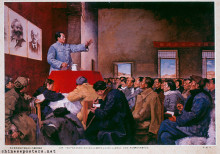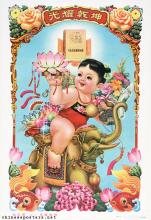Aside from the regular appearance of his image on Tiananmen Square during occasions of national importance, Karl Marx (1818-1883), as one of the major founts of ideological wisdom, has been visualized more than often. His portrait has been ingrained in the Chinese gaze. Up to the present, it remains one of the favorite images for use in class rooms.
Long live great Marxism-Leninism-Mao Zedong Thought, 1971
During the Cultural Revolution, the representation of Marx played a great role in the attempts to position Mao Zedong as the last living - and therefore most relevant - contributor to Marxism.
Long Live the Paris Commune - Celebrate the 100th anniversary of the Paris Commune, 1971
Long live the dictatorship of the proletariat, 1971
Marx’s contributions to the revolutionary cause were recalled in other instances as well. In 1971, for example, to mark the centenary of the Paris Commune, commemorative posters appeared that were graced with his portrait.
Communism will certainly be realized - Commemorate the centenary of Karl Marx’s death, 1983
In 1983, a century after Marx had passed away, a number of posters was published to honor this founding father of Marxism. The images carried appropriate quotations from his writings.
In some cases, Marx was used for more contemporary propaganda purposes. When the one-child policy was started in the early 1980s, much was made of the fact that Marx himself, by fathering only one daughter (Jenny), was an early advocate of the single-child family.
